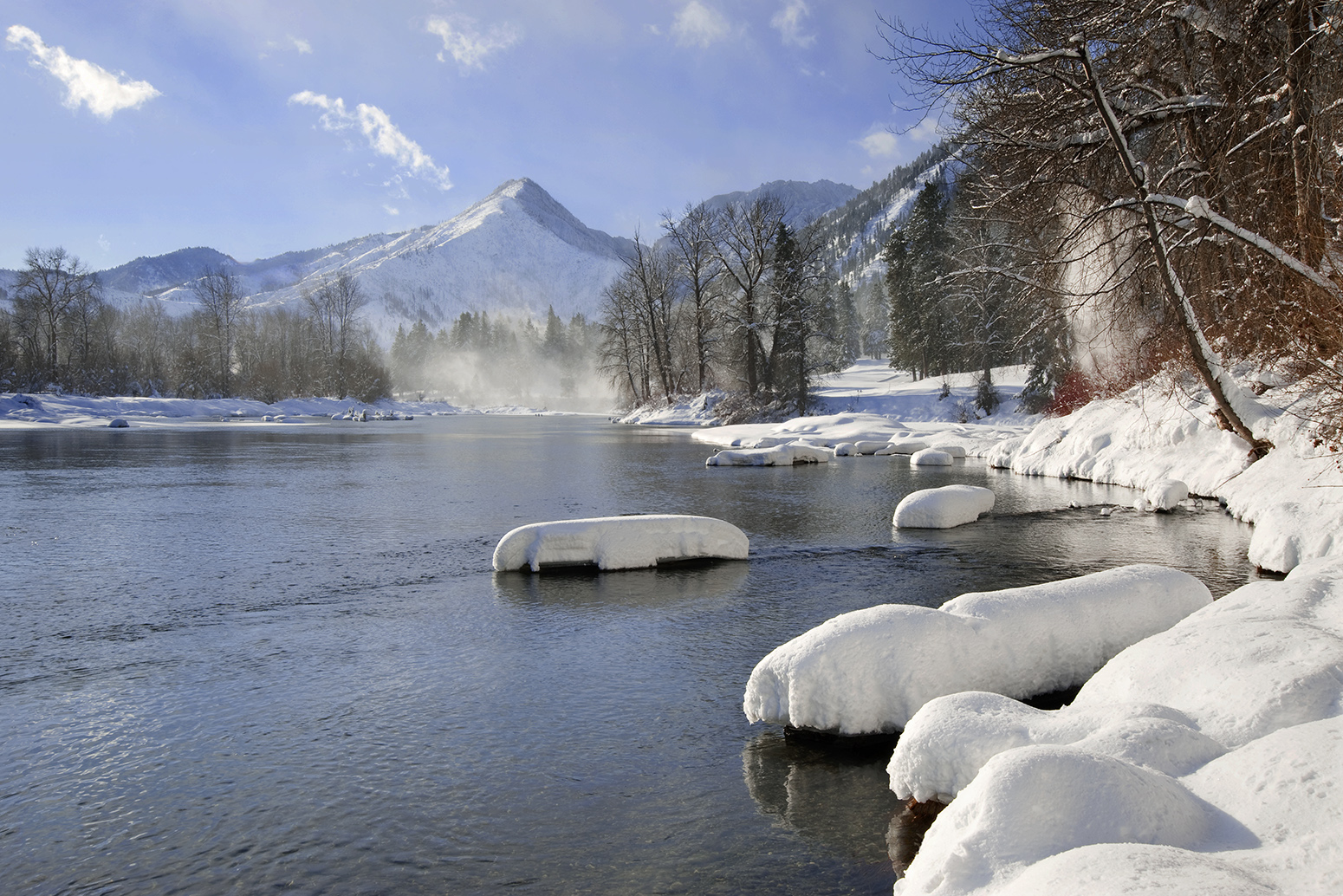
Declining snowpack could threaten 1.9bn people with water shortages
Robert McSweeney
11.12.15Robert McSweeney
12.11.2015 | 5:34pmAlmost 2bn people live in areas of the northern hemisphere that rely on melting snow as a crucial source of water. But a new study warns that this supply could be under threat from rising global temperatures.
Water demand
For many people living in the foothills of mountain ranges, the snowpack is a critical source of water. Snow accumulates on highland peaks during winter. As temperatures rise in spring and summer, the snow melts and the water then winds its way down to the lowlands, where it supplies people, crops and ecosystems.
The new study, published in Environmental Research Letters, says that less snowfall and earlier melting could threaten the quantity and timing of this water resource.
The study assessed 421 basins across the northern hemisphere. A basin is an area within which all rain that falls will end up draining into a particular river. Of the 421 basins, 97 currently rely on snowmelt to meet their water needs. These areas are home to around 1.9bn people.
As many as 68 of the basins could see snowmelt diminish until it no longer meets water supply needs by 2060, the paper says – even if demand doesn’t go up.
Snowmelt runoff
For much of the northern hemisphere, enough rain falls to meet human water consumption, by and large. But some areas still have an “unmet demand” that they need to supplement with other sources, such as groundwater and snowmelt.
In the map below, for example, snowmelt currently supplies 100% of unmet demand in the Colorado basin the US (No.2, shaded purple) from March to August, but 40-50% for the Syr Darya basin in Central Asia (No.3, shaded green).

Current percentage of unmet water demand supplied by snowmelt. Blue stripes show areas where water demand is entirely met by rainfall. White regions have no snowmelt runoff. Source: Mankin et al. (2015)
Using two sets of climate models, the researchers estimate future change in snowmelt and rainfall runoff during March to August, under a high emissions scenario. Runoff is how much rain or meltwater makes it into streams and rivers, and eventually the water supply.
The researchers ran their climate models from 2006 to 2080 and the results, shown below, are given as projected changes for every 50 years.
You can see that most areas can expect a decrease in snowmelt (red shading in left-hand maps). For many basins, at least some of the snowmelt decrease is compensated by an increase in rainfall (blue shading in right-hand maps).
However, much of Central America, the Mediterranean and Central Asia could see a decrease in both.

Projected change in March to August snowmelt (left) and rainfall runoff (right) between 2006 and 2080, under RCP8.5. Expressed as percentage change per 50 years. Results shown for two sets of climate models: CMIP5 (upper maps) and LENS (lower maps). Source: Mankin et al. (2015)
Water availability
So what do these changes in snowmelt and rainfall mean for water supplies in the northern hemisphere?
The maps below show how much water demand snowmelt is expected to meet in the future. Taken from both sets of climate models, the results include a worst-case outcome (upper maps), the average outcome (middle), and a best-case outcome (lower).
The red shaded areas show basins where snowmelt is likely to diminish. For three basins in particular, the findings show declines even in the best-case outcome: the Duero-Adour in northern Portugal and Spain, the Central Apennines in Italy, and the Rio Grande, which spans Texas and Mexico.

Percentage change in amount of unmet water demand supplied by snowmelt between 2006 and 2080, under RCP8.5. Results shown for two sets of climate models: CMIP5 (left) and LENS (right). Grey shading shows areas where future rainfall runoff is insufficient to meet human water demand. Source: Mankin et al. (2015)
With a declining resource from snowmelt, affected areas will need to change how they manage their water to ensure they have enough supply in future summers, says lead author Dr Justin Mankin, from Columbia University’s Earth Institute.
But climate isn’t the only factor in how water availability will be affected, says Mankin. He tells Carbon Brief:
[A]n even larger source of uncertainty is people and how their consumptive patterns will change in the future – we know populations will increase and that demand will as well.
While technological advances and improvements to water management could offset some of the risk of water shortages, Mankin says, they will have to compete with the combined effect of increasing demand and decreasing supply.
Main image: Himalaya Mountains, Asia. © 68/Steve Allen/Ocean/Corbis.
Mankin, J.S. et al. (2015) The potential for snow to supply human water demand in the present and future, Environmental Research Letters, doi:10.1088/1748-9326/10/11/114016
-
Declining snowpack could threaten 1.9bn people with water shortages
-
Water supplies that rely on melting snow could be under threat from rising global temperatures.


